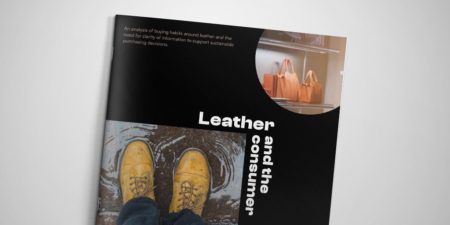New report finds consumers are in the dark about leather
Date 14.02.2022
14.02.2022
The findings of a new report, Leather and the Consumer, shows work to demystify, debunk and correct fake news is needed to support the leather industry to thrive.
The Institute for Creative Leather Technologies (ICLT), which is part of the University of Northampton, partnered with LeatherUK and Leather Naturally, to explore consumer attitudes to leather.
The report makes for some stark reading for the industry, as almost 50% of people surveyed thought leather goods were derived from animals raised specifically for leather production. A myth the industry is keen to bust. In fact, consumers who are aware that the hides used to create leather goods are a by-product of the food industry and would otherwise go to waste, felt more favourably towards investing in products due to their sustainable value.
Marc Gummer, Senior Lecturer at the Institute for Creative Leather Technologies said: “This research project supports the ICLT’s ongoing mission to educate a diverse audience alongside challenging misinformation and falsehoods related to leather. We are proud of the work we do to promote leather and know that it is a sustainable material with unique properties.
“To ensure our education remains relevant it’s important that we stay abreast of what consumers think about leather and the leather industry. To address this, we surveyed 2,000 UK adults to ask their views on a broad range of leather and related issues.”
The report found that attitudes towards the sustainability of fashion and consumerism are changing, and this important research demonstrated the need to support consumers to make informed choices with their purchasing power.
Marc continued: “The lack of knowledge we unearthed surprised us, the need for the industry to support consumers to make informed choices stood out. As shoppers are increasingly presented with a growing range of leather alternatives, often grouped under the meaningless catch-all term ‘vegan leather’, we wanted to find out if they knew what they were buying. We discovered that many didn’t.”
The report also investigates the world leather exists in, by exploring emerging purchase behaviours as well as attitudes to new forms of consumption, such as rental and pre-loved, currently making headlines in fashion, homeware, and other industries. The new age of thrift, a ‘make do and mend’ culture, and the encouraging signs of a move away from fast, disposable fashion and consumer goods bode well for a high-quality material like leather, which lasts a lifetime.
The full report can be downloaded from the LeatherUK website.